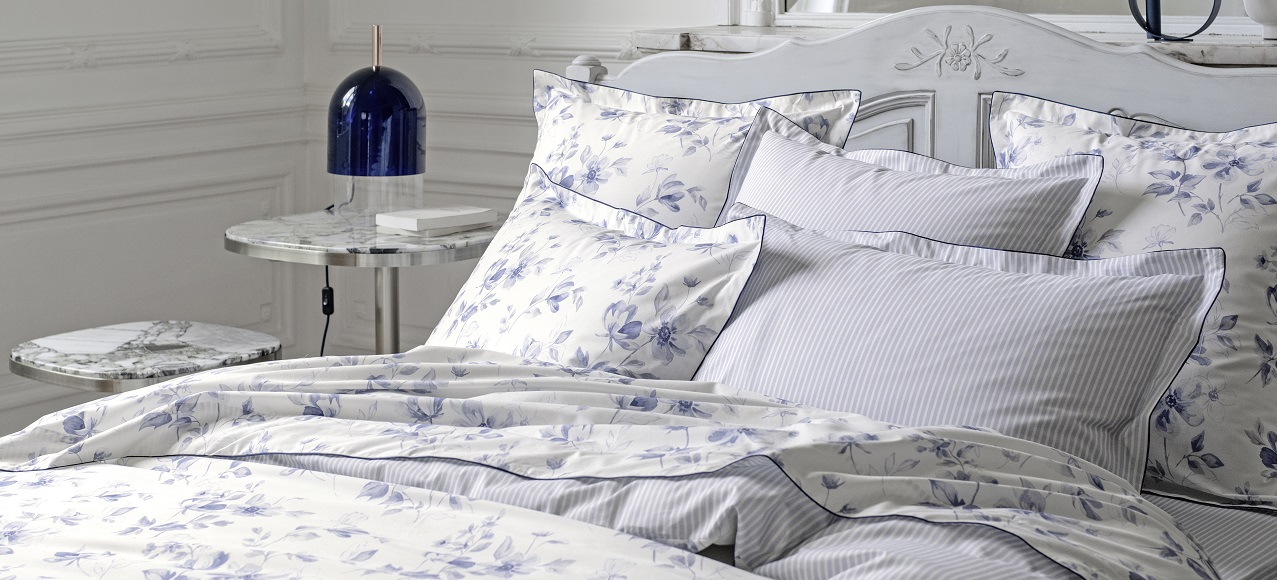Many envision sleep as a long easy peaceful resting of our mind and body. As we know, for many this is just a dream. There can be restless nights and little sleep that carries into the next day. This can bring edginess, stress, a cloudy mind, sluggishness and degradation of health.
Often cast aside in the world of “have to do”, sleep is the unsung hero of health, necessary to rejuvenate our minds and bodies. While various factors contribute to the quality of our slumber, the environment we create plays an undeniable role.
From the firmness of our mattress and the touch of premium bedding to the ambiance of our bedroom and our nightly routines, all have a role in our sleep. In our search for the perfect sleep, here are some tips to sleep better.
The Foundation: Choosing the Right Mattress
The bed owes much of its comfort to the mattress. It's the silent supporter, cushioning our bodies and aligning our spines, ensuring we wake up refreshed and free from aches.
Material Matters
The material defines the comfort and support level:
Memory foam molds to our contours;
Innerspring mattresses offer a traditional bounce;
Natural latex provides a balance of softness and support;
Hybrid mattresses combine the best of both worlds.
A breathable mattress ensures efficient air circulation, wicking away moisture and heat, allowing for a cool and comfortable sleep.
The Firmness Factor
Sleepers are not the same, some prefer the softness of a plush mattress, while others need the firm support to alleviate back pain. It's essential to choose a firmness level that aligns with your body type and sleeping position.
Thickness and Size
Standard mattresses range from 6 to 9 inches in thickness, while luxury variants up to 16 inches offer added levels of comfort. Make sure your mattress size (full, king) provides ample space for unrestricted movement.
In essence, the mattress lays the foundation for our sleep. By choosing the right one, you've taken a major step toward a restful sleep.
The Role of Premium Bedding
One of the often-overlooked tips to sleep better is bedding. Sheets, duvets, and pillows play a significant role in comfort. The touch of the fabric, its breathability, and its adaptability can either enhance or hinder our rest.
Fabric First
Cotton stands out for its softness and breathability. Its natural fibers allow efficient air circulation, ensuring a cool and dry sleep environment, especially during warmer nights. Weaved cotton like percale and sateen are runaways for luxuriously pleasant nights.
Pillows: The One for You
The right pillow supports the neck and head, aligning the spine and preventing postural issues. Whether you prefer the softness of down or the firm support of memory foam, ensure your pillow complements your sleeping position and mattress firmness.
Sheets: Just the Right Touch
Whether you select the snugness of a fitted sheet or the draped flat sheet, quality matters. Premium sheets provide a relaxing feel to your skin preparing the way for you to fall asleep soundly and comfortably.
Duvets and Comforters: Every Bit of Warmth
These cozy layers add warmth and comfort. Natural fillings like down or silk can enhance breathability, ensuring a consistent temperature throughout the night.
Optimizing Your Sleep Environment
Our bedroom environment also influences our sleep. From the room's temperature to its ambiance, every element contributes to creating a haven to peacefully fall asleep.
Lighting
The presence or absence of light can significantly impact our sleep. Dimming the lights at bedtime can signal to our body that it's time to wind down. Blackout curtains or shades can be invaluable for those sensitive to early morning light or urban brightness.
Temperature and Air Flow
A cooler room often promotes better sleep (between 60 to 67 degrees Fahrenheit, 15 to 19 degrees Celsius). Quality cotton bedding can assist in maintaining a comfortable sleeping temperature. Ensure good ventilation in the bedroom. Fresh air can improve sleep quality.
Décor, Furnishings and Space
Design a space that provides you comfort and tranquility. This includes calming colors, personal touches and a bedroom free of unnecessary distractions.
Optimizing your sleep environment is about crafting a space where the stresses of the day are replaced by a serene atmosphere that beckons one to fall asleep.
How to Establish a Nightly Routine For a Brighter New Day
Consistency is the cornerstone of quality sleep. And establishing a nightly routine not only signals to our body that it's time to wind down but also creates a mental space of relaxation and preparation for rest. Here are some tips to get you on the right side of the bed the next morning.
Maintain a Consistent Sleep Schedule
Going to bed and waking up at the same time every day, even on weekends, can regulate our internal clock. Over time, this consistency can lead to more restful and rejuvenating sleep.
Limit Screen Time
The blue light emitted by televisions, phones, tablets, and computers can interfere with the production of melatonin, a hormone responsible for sleep. Consider setting aside these devices an hour before bedtime.
Engage in Pre-Sleep Activities
Engage in calming activities before bed that transition the mind from the day's hustle to a state of relaxation. This could be a warm bath, reading a book, practicing deep breathing exercises, or a short meditation session.
Cutback on Stimulants
Consuming caffeine or nicotine close to bedtime can interfere with sleep. Avoid coffee, tea, or other stimulants in the evening to ensure uninterrupted rest.
Wear Comfortable Sleepwear
Choose breathable fabrics that allow for movement and temperature regulation.
Incorporating these practices into a nightly routine may positively transform the quality of your sleep. Over time, the body and mind begin to associate these actions with rest, making the transition to sleep smoother and more natural.
Last Sleeping Thoughts
Putting our head on a pillow and closing our eyes does not guarantee sleep, let alone a good sleep. When implementing some of these tips to sleep better, start with where we touch down for sleep, our bed. Then bring the rest of the surroundings and routines into the coziness we have established there. From the comfort of our own space, close our eyes and drift peacefully asleep.




